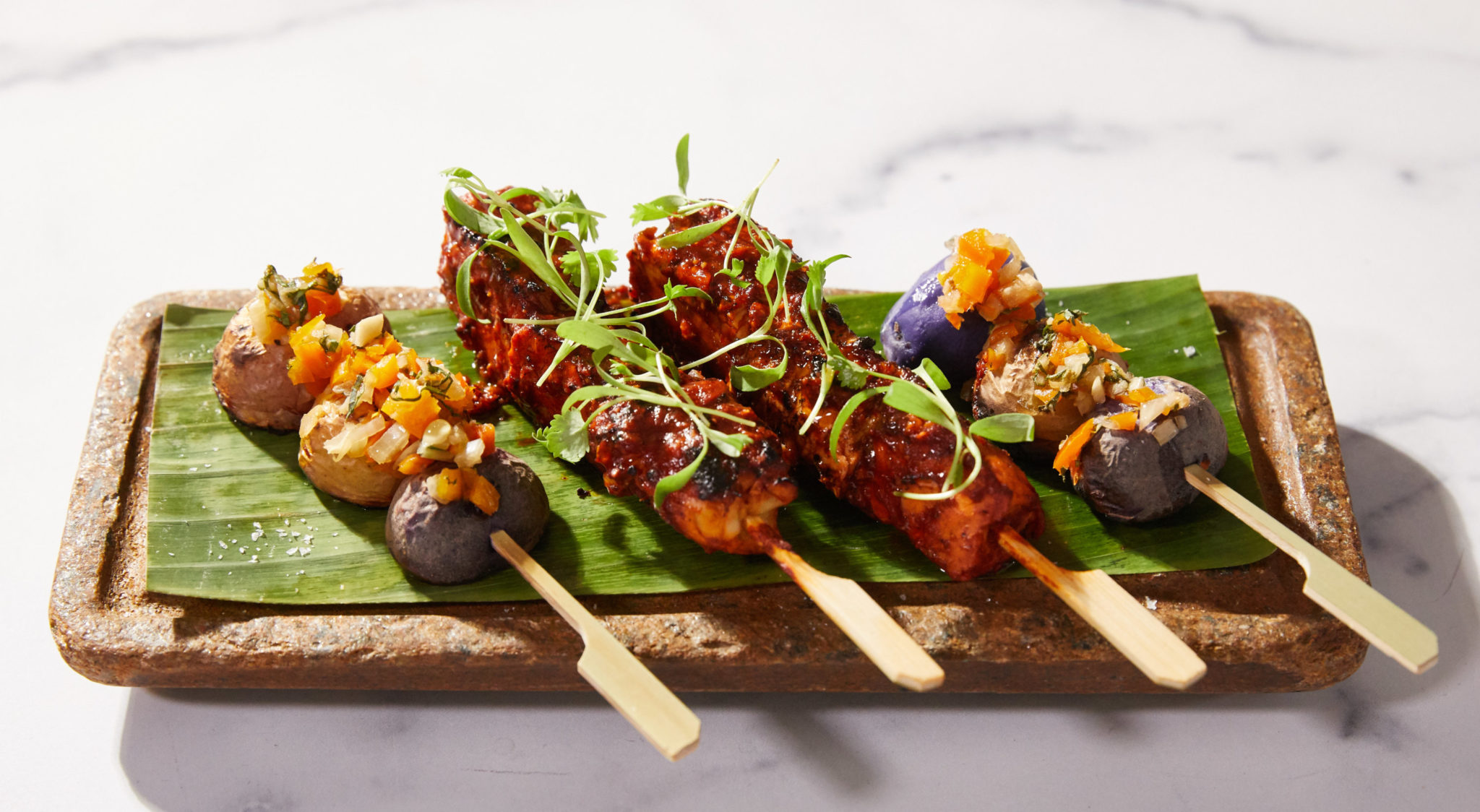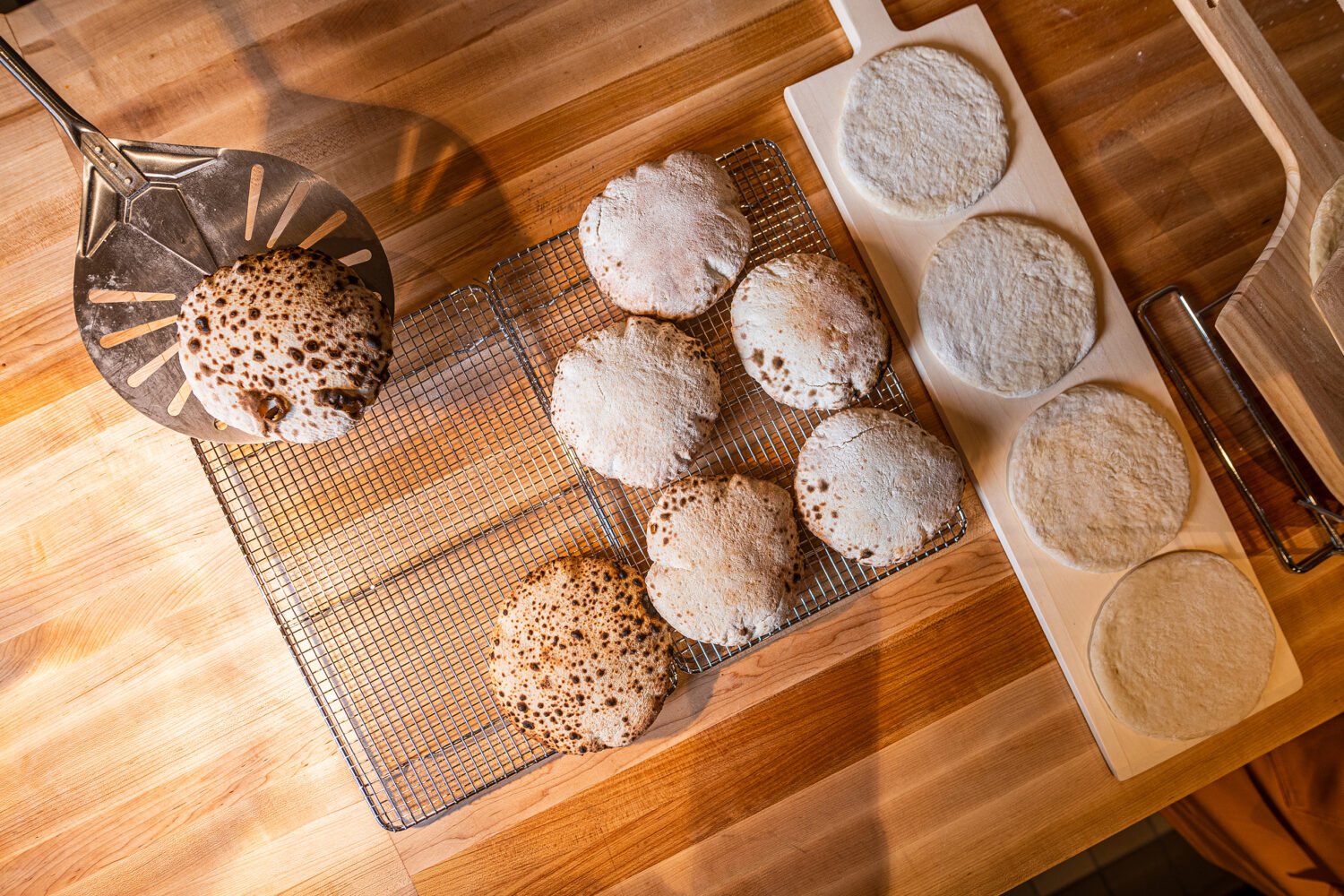One of DC’s most exclusive dinner reservations books up in minutes for just eight seats per week. The main attraction is a rare ingredient currently served at only two restaurants in the entire country: chicken grown in a lab.
Celebrity chef José Andrés’s Penn Quarter Peruvian restaurant, China Chilcano, became one of the first in the US to offer cell-cultivated protein after federal regulators approved the sale of California-based company Eat Just’s Good Meat in June. A team of scientists collect cells from live chickens, then grow them in stainless steel tanks with a nutrient bath for four to six weeks. The product is then processed with various plant-based proteins to give it a more chicken-like texture and structure and to cut down on the exorbitant costs of pure cell meat. “It’s a different way to farm,” says chef Nate Park, head of product development.
While the chicken is a pricey novelty for now, Eat Just’s ultimate aspiration is the exact opposite: a sustainable, affordable no-kill meat alternative capable of feeding the masses. “I don’t think of it as a luxury product. We’re just at the tip of the spear,” says Park. “I see it as a scaling product that should sit next to conventional natural-raised chicken within five to ten years in a grocery store.”
Good Meat’s chicken has been available in Singapore since 2020, and the American market could get more crowded soon. Dozens of companies are developing their own cell-cultivated proteins, from salmon to beef. One of Good Meat’s competitors, Upside Foods, introduced its own recently USDA-approved version of chicken at San Francisco’s Bar Crenn, which otherwise does not serve any meat.
Andrés joined the board of Good Meat two years ago after trying its chicken nuggets and buying into its future-of-food mission—“a first for the history of humanity,” he calls it in a statement. The company touts that its poultry is “made without tearing down a forest or taking a life,” but China Chilcano is already stirring up some controversy by serving it. General manager Alan Grublauskas says the restaurant has been bombed with some one-star reviews from those turned off by the unnaturalness of food cooked up in a lab. “Some people just feel that if you’re going to have an animal or animal product, it should be directly from the animal,” Grublauskas says. There are also questions about the carbon footprint of cell-cultivated meat and whether it’s as environmentally friendly as it claims. On top of it all, vegans and vegetarians are debating whether they should eat cell-cultivated meat. Good Meat does not market its product as vegan, but PETA’s a fan of the new technology, saying it has “potential to save billions of animals per year.”
But let’s get down to the big question: does it… taste like chicken? I got a behind-the-scenes look before China Chilcano’s first public service of the $70 tasting menu highlighting the Good Meat. The chicken arrives in the kitchen pre-cooked sous-vide and vacuum-sealed, resembling a beige blob of Playdough. It’s a little denser than regular chicken and not as juicy. If you look closely, you’ll see layers that flake apart. Executive sous chef Victor Bonano compares it to white meat because of its leanness. “You have to be very gentle,” says Bonano as he slices the chunk into four pieces for two 50-gram portions per diner.
China Chilcano marinates the chicken in a spicy Peruvian anticucho sauce for an hour (marinades penetrate it more quickly than regular chicken), skewers it, and grills over Japanese charcoal until charred. It’s served simply with some chimichurri-topped potatoes and finished with some olive oil and micro-cilantro.
Finally, I get to try it. My first impression: It’s more like a cooked firm tofu with a bit of a springy texture. Maybe I could be convinced it was regular chicken if I wasn’t paying such close attention, but it still feels more like a wannabe. The spicy sauce dominates, so it’s hard to gauge the flavor of the flesh itself. My ultimate verdict? It doesn’t not taste like chicken.
The technology is still new, and Good Meat is continually tweaking their process, Park says. Already they’re working on an upgraded version that they say more closely resembles chicken thighs.
“We’re not done until it’s almost impossible to differentiate between conventional chicken and cultivated chicken,” Park says. “There’s a lot of work still to do.”


















